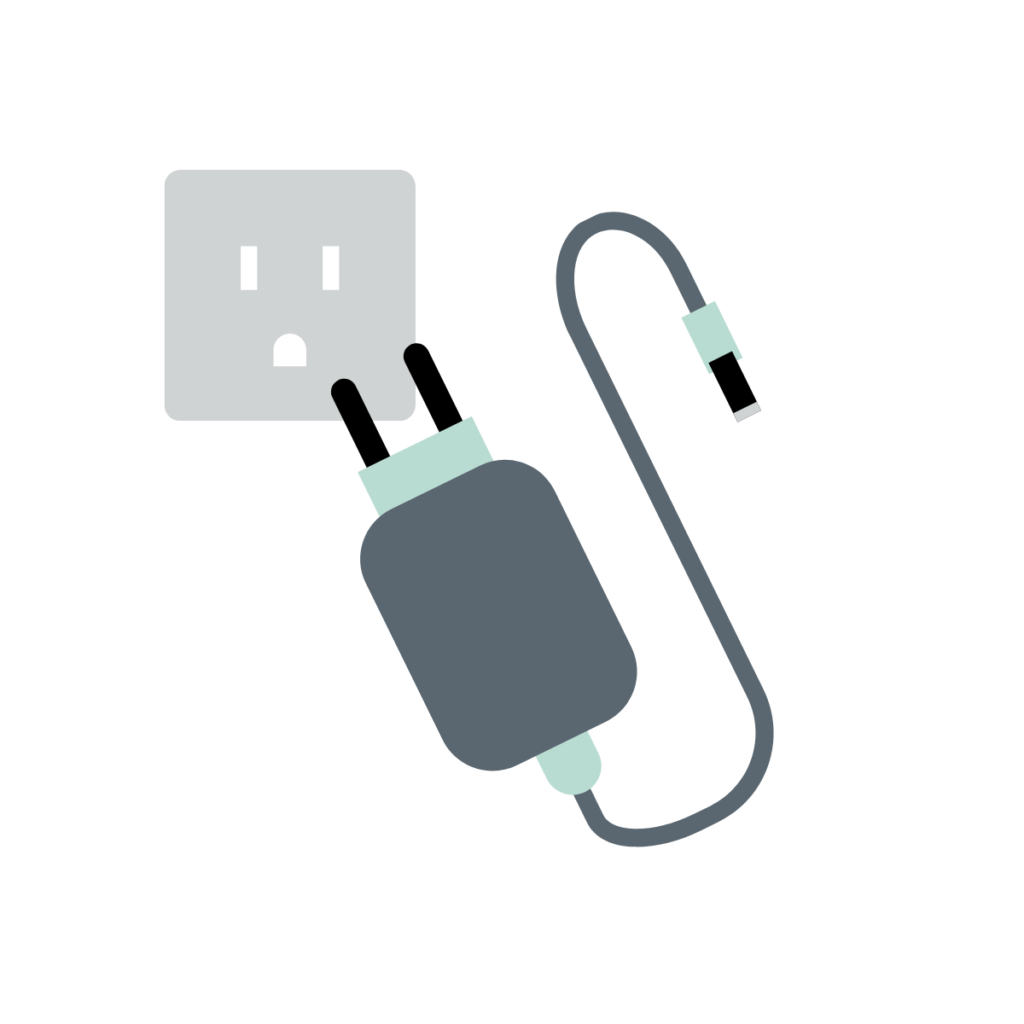Going green at work shouldn’t just happen on Earth Day. It should happen every day of the year! You don’t need to make massive changes or huge investments. Small, consistent actions add up to a BIG environmental impact when everyone participates. These 14 eco-friendly tips can improve productivity, reduce costs, and create a more pleasant work environment.
It’s a win for the planet, your workplace, and your well-being.

1. Switch to a Reusable Water Bottle
![]()
Did you know the average office worker uses 500 cups each year? We didn’t! That’s a lot of paper, plastic, and styrofoam going straight to landfills. Encourage employees to switch to reusable water bottles instead to reduce plastic waste AND recurring disposable expenses for the business.
It’s a no-frills change with meaningful environmental and bottom-line impact.
Marketing Pro-Tip: Gift your team quality company-branded water bottles on Earth Day. Yes, there’s an upfront cost, but afterward, you’ll enjoy free brand awareness wherever your employees go (in and outside of work). Your people stay hydrated, our planet benefits, and your logo gets extra visibility—triple win!
2. Organize an Office Carpool
![]()
The average commute time to work for workers in the Twin Cities is 23.8 minutes. Some quick math shows us (rounding up):

That’s a lot of time, gas, and emissions!
Connect with colleagues who live nearby and establish a simple carpooling schedule. By sharing rides, everyone saves on fuel costs and vehicle maintenance while reducing traffic congestion and carbon emissions.
For Hybrid Workers: Even occasional carpooling for in-office days or client meetings adds up to a meaningful environmental impact over time.

3. Pack Your Lunch in Reusable Containers
![]()
An office worker who brings lunch in disposable containers can discard up to 260 containers annually (based on a typical 5-day work week).
Switching to reusable containers is a small change with a BIG impact! Quality reusable containers prevent food leaks, keep meals fresher, and cost less than continuously purchasing disposable alternatives.
Quick Impact Idea: Keep a few extra reusable containers in your office kitchen for days when colleagues forget theirs. This simple gesture encourages sustainable habits throughout the workplace.
4. Set Up Recycling Bins
![]()
Estimates show that 70% of a business’s landfill waste can be recycled! Yet, many workplaces still send everything to landfills. Be the change-maker in your office, not just on Earth Day but every day!
Set up clearly labeled recycling stations for paper, plastic, and aluminum. And make it impossible for people to ignore! Place bins where people naturally discard items—next to printers, in break rooms, and near desks. Reaching for the recycling bin should be just as easy as the trash can.
5. Avoid Printing When Possible
![]()
The average office worker uses 10,000 sheets of paper each year! That’s about 20 reams per person! And if that doesn’t make your skin crawl, a study from Xerox revealed 2 shocking truths:

Before hitting that print button, pause and ask: “Is this truly necessary?”
Printing less is good for the planet and your company’s bottom line. It can save thousands annually on paper, ink, printer maintenance, and storage costs. Digital documents are also searchable, shareable, and much harder to lose.
Digital Workplace Tip: Set your office printer defaults to double-sided and draft quality. Create a simple digital filing system that everyone can access. When information is easily found digitally, employees naturally print less.
6. If Unavoidable, Print Double-Sided
![]()
When printing is necessary, make it double-sided! This simple change immediately cuts paper usage by 50%, reducing environmental impact and supply costs.
Printer Pro-Tip: Set double-sided printing as the default on all office printers.

7. Unplug Electronics When Not in Use
![]()
Did you know idle electronics still draw power? This “phantom energy” can account for up to 10% of your office electricity bill! Unplug devices like printers, chargers, and computers when not in use—especially over weekends and holidays (and Earth Day!).
Energy-Saving Tip: Invest in smart power strips that automatically cut power to inactive devices. Ask your IT team to implement energy-saving settings on all office equipment for company-wide impact.
8. Organize an Earth Day Office Cleanup Crew
![]()
Turn team building into meaningful action by organizing regular cleanup events (We know, we know, we titled this tip “Earth Day Cleanup Crew,” but that doesn’t mean you can’t team build and care about the earth year round!). Connect with colleagues who care about the environment and pick a location near your office – whether it’s a stretch of the Mississippi River, a local park, or just the office grounds.
For Hybrid Teams: create opportunities for remote workers to participate in their own neighborhoods on the same day. Sharing photos and results afterward builds team spirit despite different locations.
Twin Cities Resource: The Minnesota DNR and Minneapolis or St. Paul Parks & Recreation can help you “adopt” a section of parkland near your workplace. Hennepin County and Ramsey County both offer free cleanup kits for organized group events.

9. Bring Your Own Utensils
![]()
The average office kitchen goes through thousands of plastic utensils annually; most are used for just a few minutes before being tossed.
Keep a set of reusable utensils at your desk or in your bag for lunch breaks. Many compact, portable sets include a knife, fork, spoon, and even chopsticks in a convenient carrying case.
Resource Management Tip: Stock the break room with basic reusable cutlery and dishware. Savings on disposables quickly offset the upfront cost. A simple drawer labeled “Borrow & Return” creates an easy system for staff who occasionally forget their own.
10. Embrace Digital Note-Taking
![]()
The average worker fills multiple notebooks each year, most of which end up forgotten on shelves or in drawers. Digital note-taking eliminates this paper waste while offering powerful advantages: searchable text, easy organization, instant sharing, and access from any device. Digital notes also eliminate the need for participants to take identical notes during meetings and presentations.
Productivity Tip: Explore versatile note-taking platforms like Evernote, OneNote, or Google Keep. Each offers unique features like handwriting recognition, audio recording, or seamless integration with other workplace tools.
11. Donate Your Work Clothes
![]()
Cleaning out your closet? Those work clothes could help someone land their next job! Local organizations like Dress for Success put your gently used professional attire directly into the hands of local people entering or re-entering the workforce.
Twin Cities Resource: Want to refresh your own work wardrobe? Check out Arc’s Value Village and Turnstyle Consignment. You’ll find quality professional pieces at budget-friendly prices while keeping perfectly good clothing out of landfills.
12. Maximize Natural Lighting
![]()
Natural light does double duty. It cuts down on energy use AND boosts mood and productivity in the workplace. Open those blinds and curtains during daylight hours! This simple habit reduces electricity use while creating a more pleasant office environment.
For home-based workers, set up your desk near windows to make the most of daylight. No window access? Look into full-spectrum bulbs that mimic natural sunlight.
Facility Planning Tip: Arrange workstations near windows when possible and use light-colored paint to help sunshine reach deeper into your space. For bigger budgets, skylights or light tubes can bring natural light to interior areas that wouldn’t otherwise see the sun.

13. Invest in Energy-Efficient Lighting
![]()
LED bulbs are your next best option when natural light isn’t enough. They use up to 75% less energy than traditional incandescent bulbs and last 25 times longer! This means fewer replacements, lower electricity bills, and a significant reduction in your carbon footprint.
The upfront cost of LEDs has dropped dramatically in recent years, and the long-term savings make the switch a no-brainer for any workspace.
Budget-Friendly Tip: Replace bulbs gradually as old ones burn out, focusing first on lights that stay on the longest. Complement overhead lighting with energy-efficient desk lamps so employees can control their immediate workspace lighting while decreasing overall energy use.
14. Encourage a Green Mindset
![]()
Individual actions add up, but creating a culture of sustainability multiplies your impact! Share simple green tips with colleagues, recognize eco-friendly efforts, and make sustainable choices visible in your daily work.
Team Building Tip: Create friendly competitions like “Plastic-Free Week” or a “Green Idea Board” where everyone can contribute suggestions. For remote teams, use digital channels to share sustainable practices and celebrate green wins across locations.
Final Thoughts
![]()
Workplace sustainability is about making better choices every day (including Earth Day!) where you can. Each of these 14 tips helps reduce environmental impact while saving money and creating a better workspace.
Start with one or two tips that make sense for your situation. When we all make small changes, the collective impact is significant.
Which tip will you try this week?

